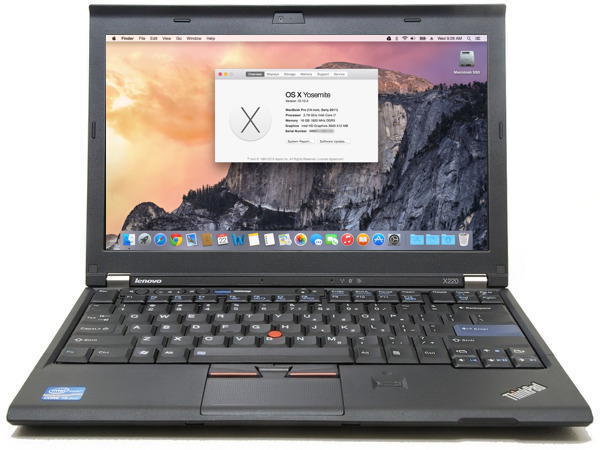

With macOS, you can move all the information from your old PC to your new Mac. Built-in Windows-to-Mac migration in macOS automatically transfers your documents, music, contacts, calendars, and email accounts (Outlook and Windows Live Mail), and puts them in the appropriate folders and applications on your new Mac. Just like that.
Here's how you run Mac apps on your Windows 10 machine, for free. Step 1: Create a macOS Virtual Machine. The easiest way to run Mac apps on your Windows 10 machine is with a virtual machine. While it is the easiest method, it is also a lengthy process. Follow my tutorial on How to Run macOS on Windows in a Virtual Machine. How to Use Alexa on a Mac. If your machine doesn't run Windows 10, you can't download Alexa, but you can use the Alexa app in your browser. Oct 17, 2019 Step Three: Install VMware Patch to run Mac OS X. Run VMware Mac OS Unlocker Patch. Go to the VMware macOS Unlocker page to download. Click the Clone or download button, then click Download ZIP. Power off all virtual machines running and exit VMware. Extract the downloaded.zip file in step 1. On Windows, right-click on the win-install.cmd file.
If you buy your Mac at an Apple Store, Personal Setup can help you get off to a great start.
Work with anyone.
Every Mac comes with Pages, Numbers, and Keynote — powerful productivity apps from Apple that help you create stunning documents, spreadsheets, and presentations. You can collaborate with one person or many people to create and edit Pages, Keynote, and Numbers files. And everyone can work on the same document at the same time — from across town or across the globe. You can also open, edit, and save Microsoft Word, Excel, and PowerPoint files with these apps, so you can easily work with others, regardless of whether they're on a Mac or PC.
Use Microsoft Office for Mac. Connect to Microsoft Exchange Server.
Fun fact: There's a version of Microsoft Office written just for Mac. So you can use Word, Excel, and PowerPoint on a Mac just like on a PC.
macOS also provides built-in support for the latest version of Microsoft Exchange Server. So you can use all the apps you love on your Mac, and have access to your mail, contacts, and calendar from the office, all at the same time.
Access your files from anywhere with iCloud.
Your Mac comes with iCloud Drive, which lets you safely store all your presentations, spreadsheets, PDFs, images, and any other kinds of files in iCloud. Then you can access them from any device, including your iPhone, iPad, iPod touch, Mac, or PC.1
Industry standard‑bearer.
Thanks to its support for industry standards, macOS works with virtually all email providers and websites. It also lets you view the most common file types, including Office documents, PDFs, images, text files, MP3s, videos, ZIP files, and more.
So if you're moving files from a PC or if your friends and colleagues send you files, you can rest assured they'll work beautifully on your Mac.
Relax. Your camera, printer, and mouse work, too.
Almost any device that connects to a computer via USB, audio cable, or Bluetooth will work with a Mac. That includes digital cameras, external hard drives, printers, keyboards, speakers, and even your right-click mouse. And with technologies like AirPrint and the array of class drivers included with macOS, you can start using these devices as soon as you plug them in — no need to manually download additional software.
A Mac can even run Windows.
Have a Windows application you need to use once in a while? No problem. Every new Mac lets you install and run Windows at native speeds, using a built-in utility called Boot Camp.
Setup is simple and safe for your Mac files. After you've completed the installation, you can boot up your Mac using either macOS or Windows. (That's why it's called Boot Camp.) Or if you want to run Windows and Mac applications at the same time — without rebooting — you can install Windows using VMware or Parallels software.2
Connect to PCs over a network.
The Finder not only lets you browse files on your Mac, it also makes it easy to find files on other computers — both Mac and PC — on your home network. Computers that allow file sharing automatically show up in the Shared section of the Finder sidebar, allowing you to browse files and folders you have permission to view.
Works on macOS
- Microsoft Office for Mac and Word, Excel, and PowerPoint documents created on a Mac or PC
- Windows using Boot Camp or third-party software
- Access to Microsoft Exchange Server in Mail, Contacts, and Calendar
- Virtually all email services and providers
Will Mac Os Run On My Pc
- Popular file types such as PDF, JPG, ZIP, MP3, PSD, and more
- Digital cameras, printers, hard drives, mice, and keyboards with USB connections
- Wi‑Fi hotspots and Windows networks
- Text messaging with Skype, Facebook, WeChat, LINE, and more
